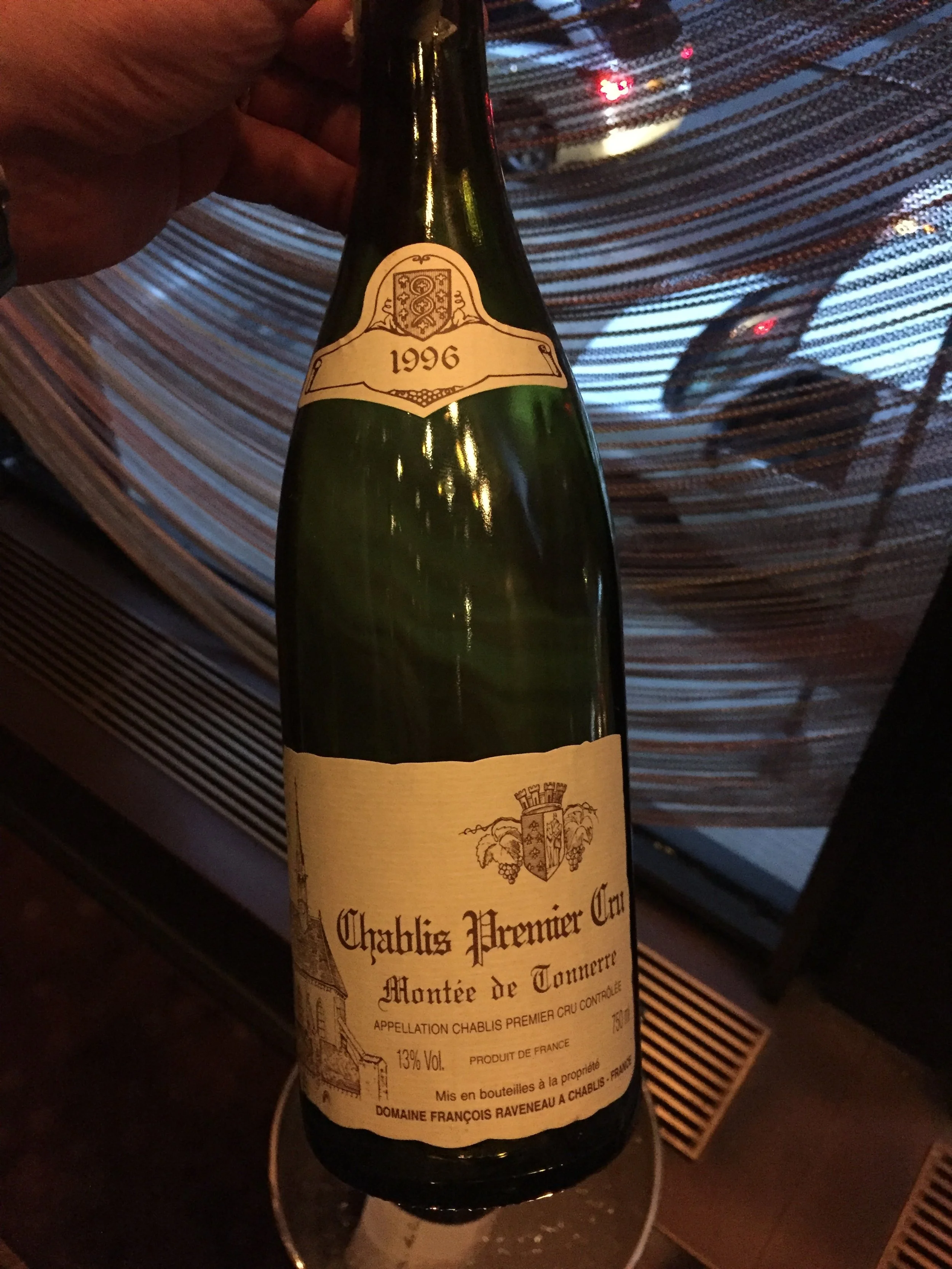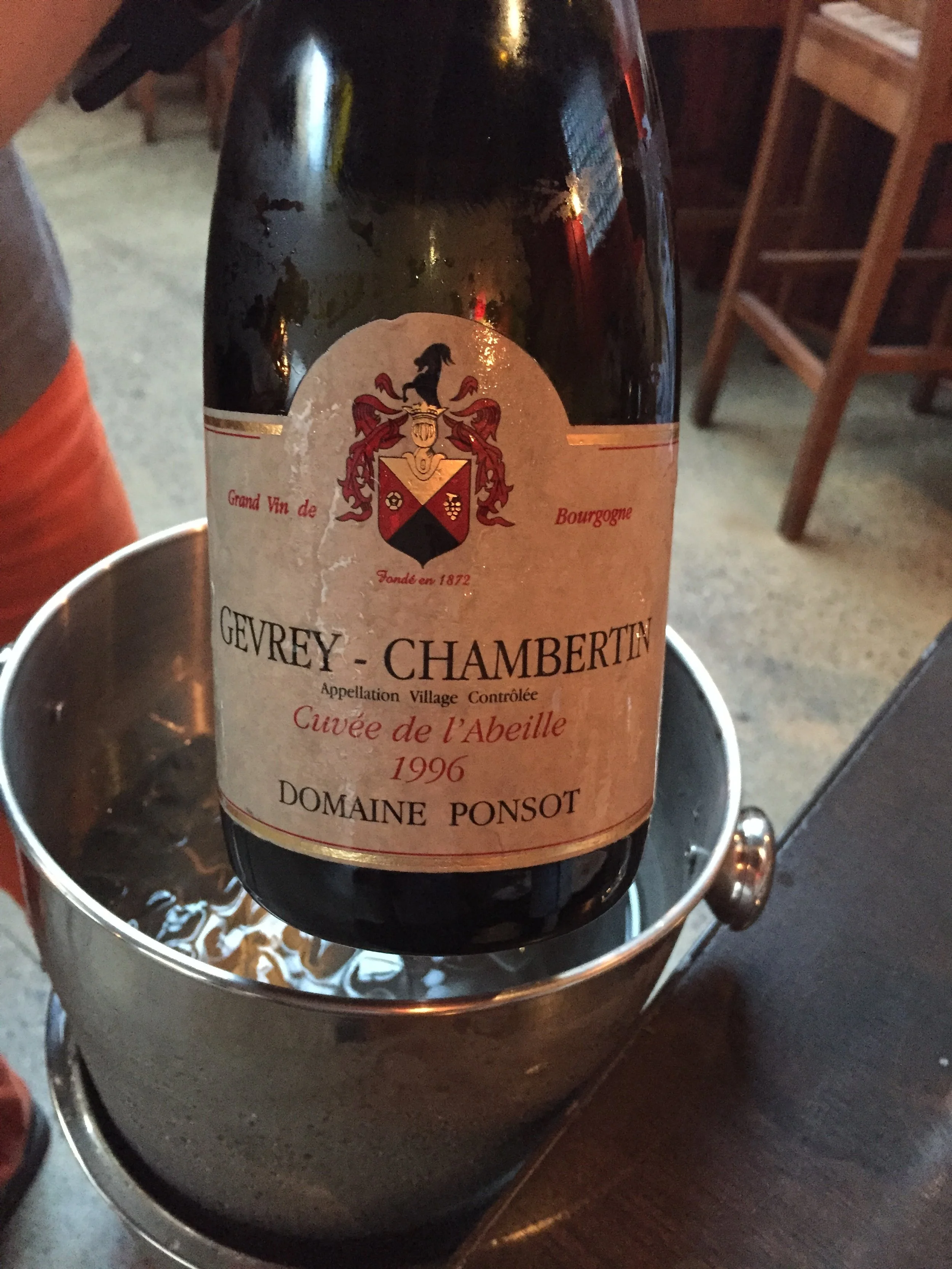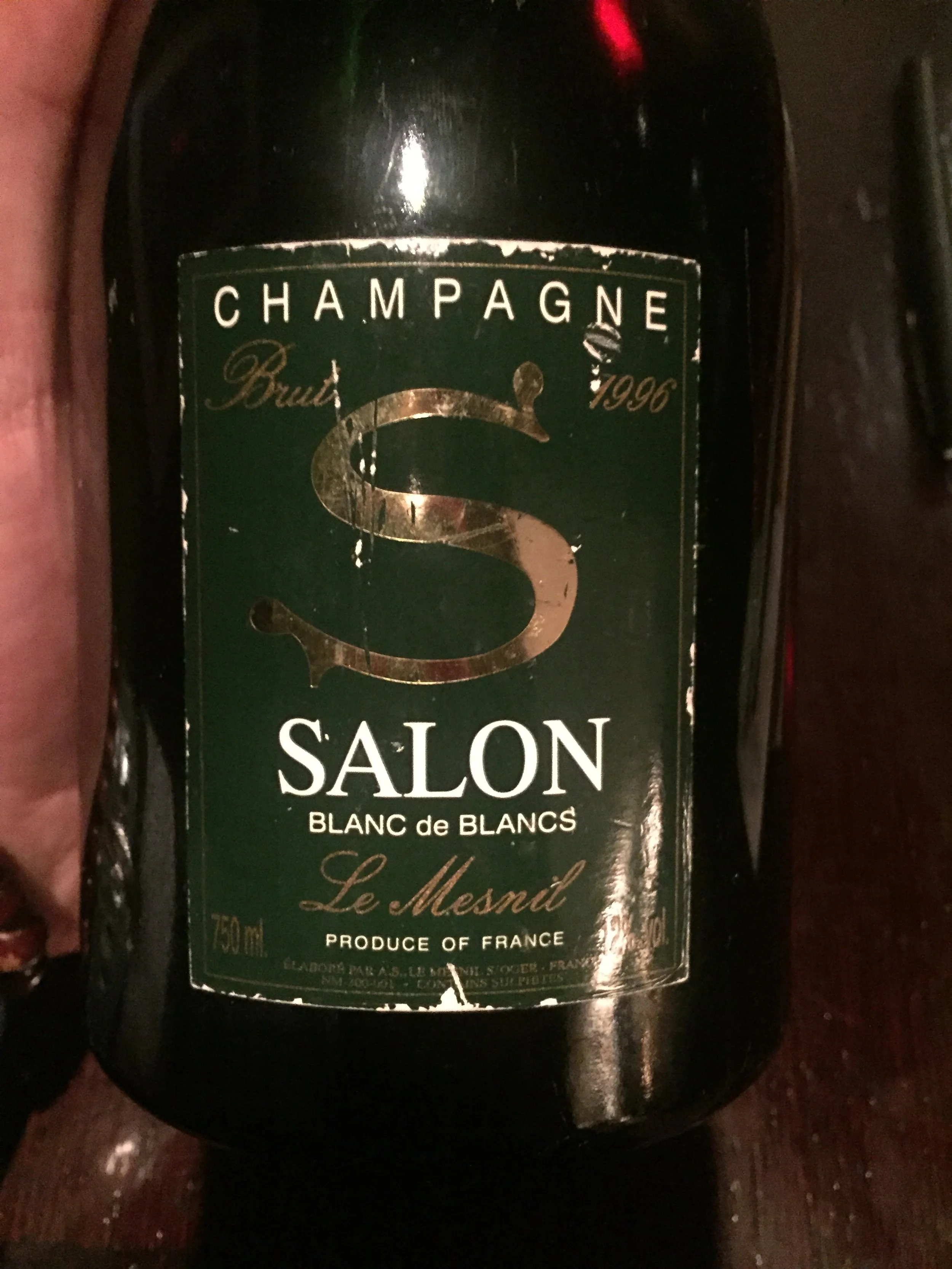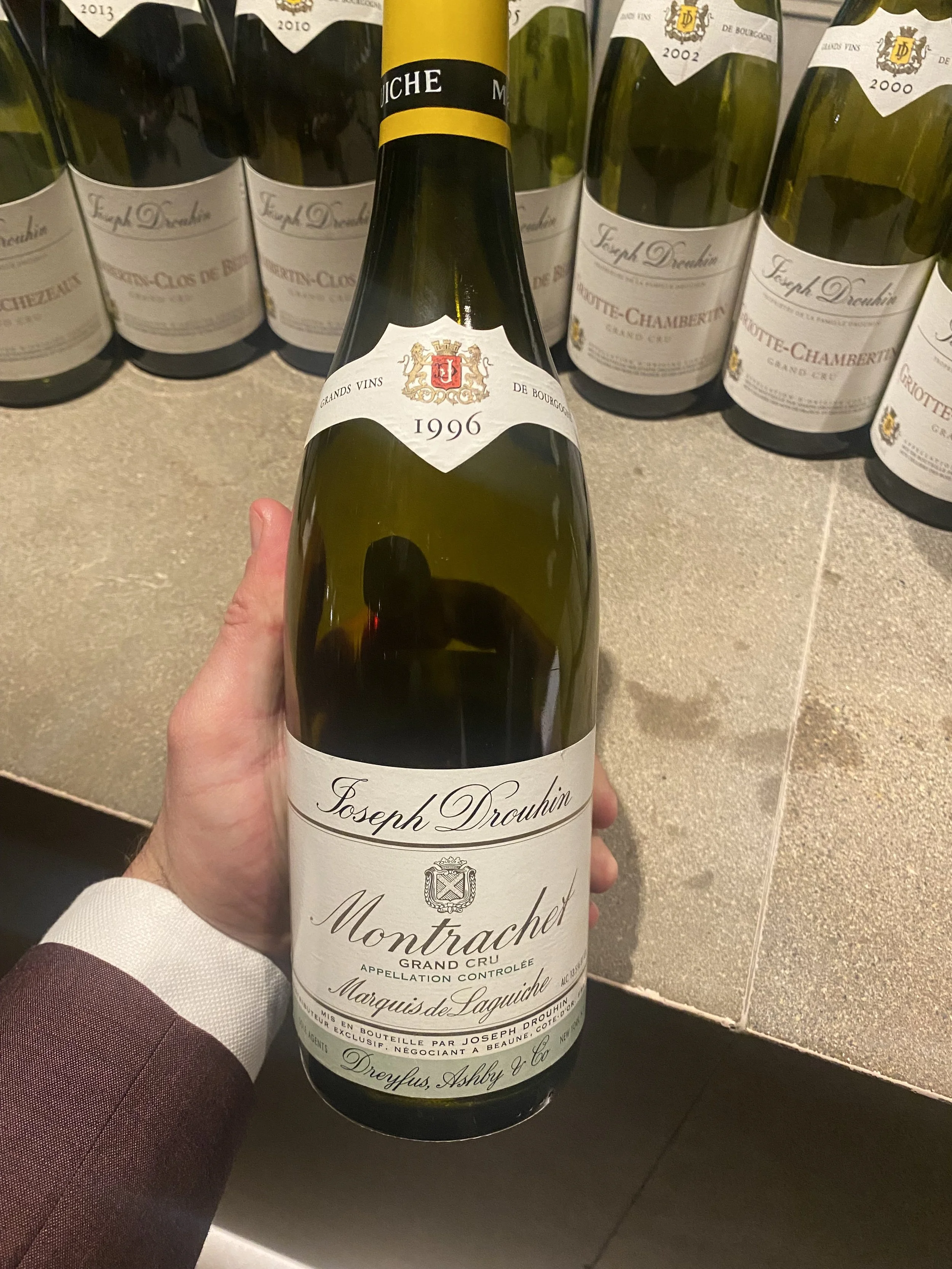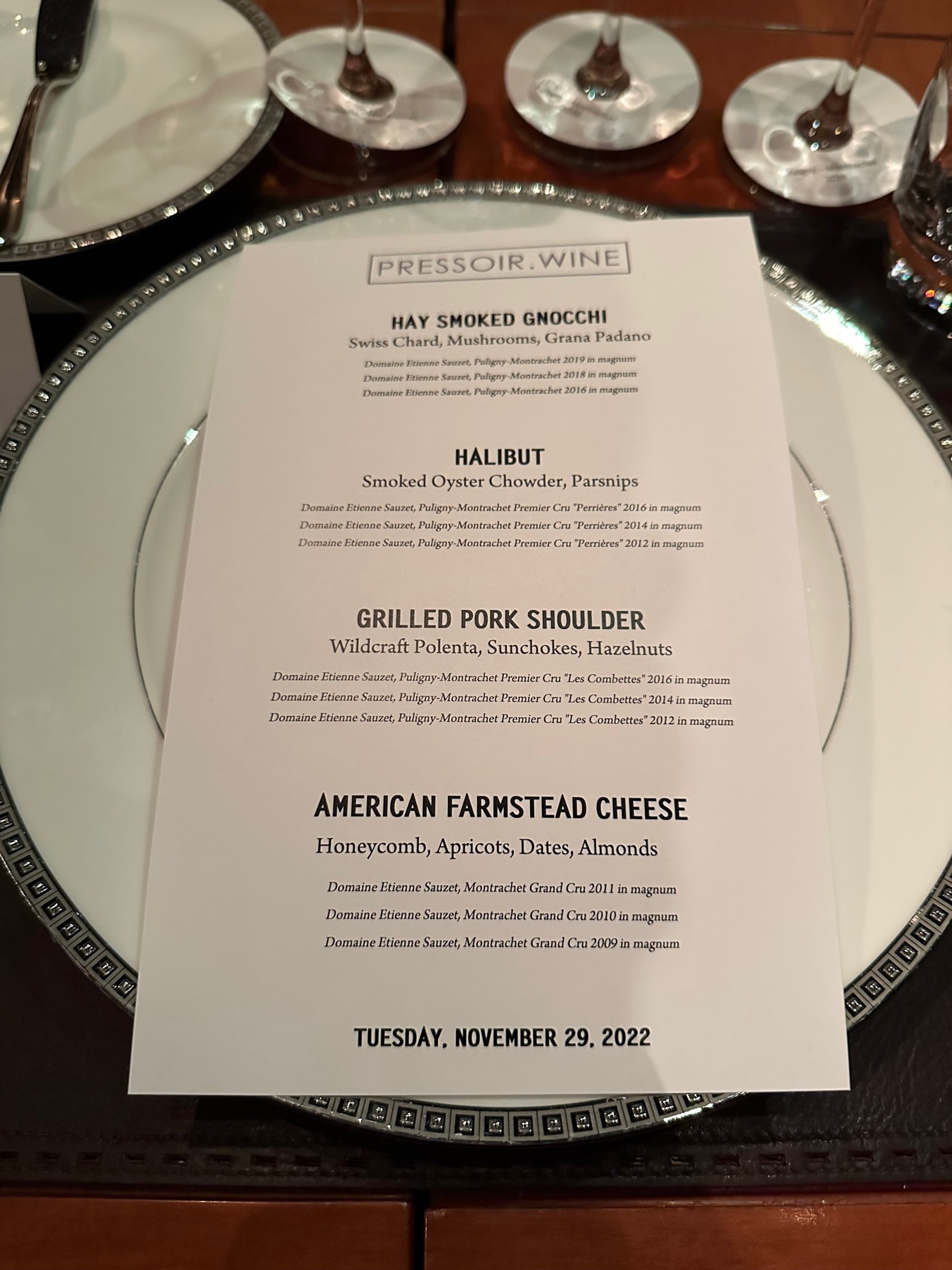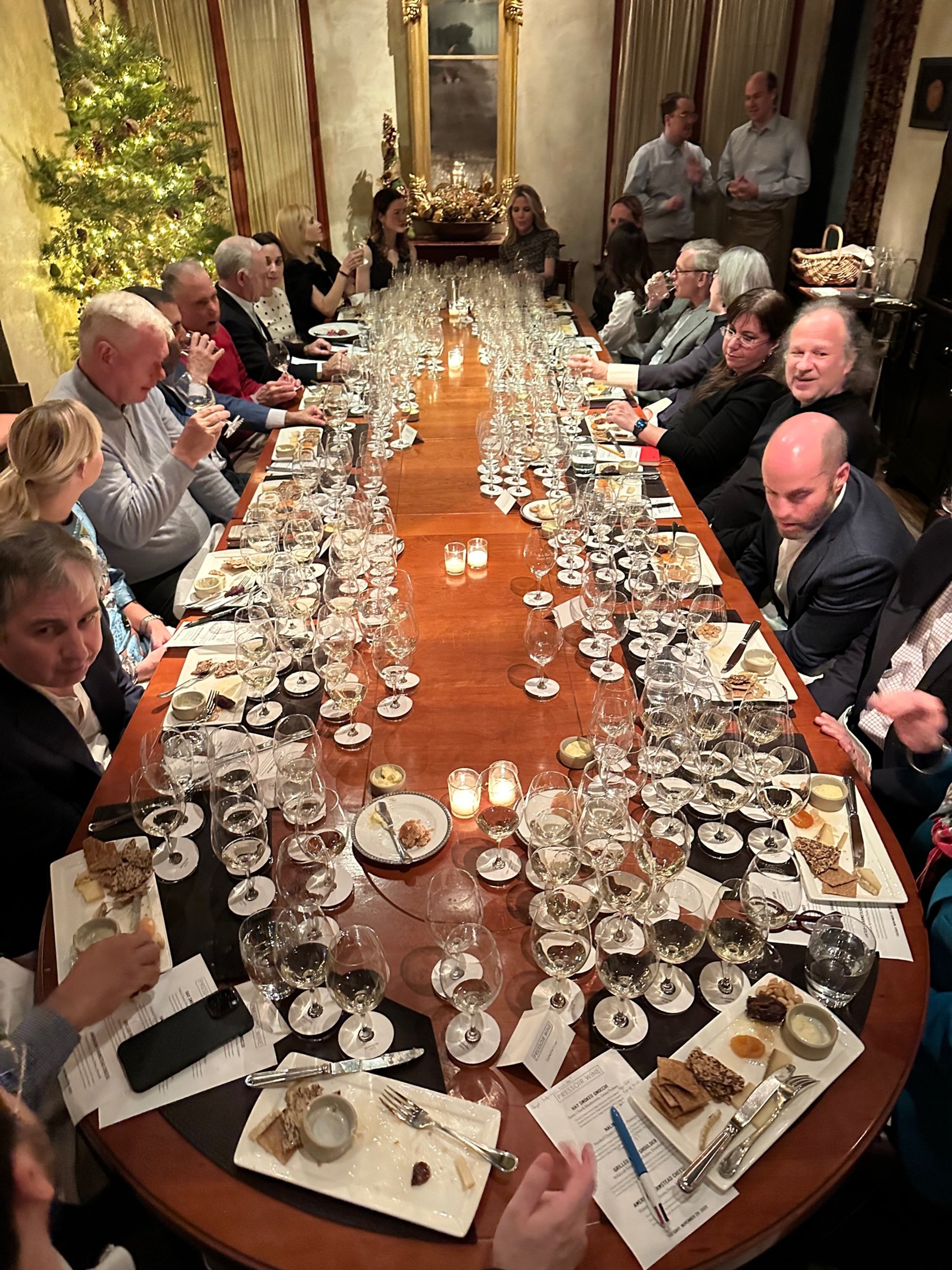1996 in champagne. what happened?
by Edouard Bourgeois
November 21, 2025
Ratings for 1996 often use words like "exceptional" and "grandiose," with some comparisons to 1928. What made 1996 objectively unique was the high average potential alcohol (10.3%) combined with high total acidity (10g/litre)—figures rarely seen together. As Charles Philipponnat noted, this is a significant jump from the 9.3% potential alcohol common forty years prior.
Acidity and potential alcohol work together for balance, but typically, when one is high, the other is low. In 1996, both figures were high. Bruno Paillard called it a 'naughty boy' vintage due to its unpredictable nature and the anxiety it caused producers while waiting for acidity levels to drop. However, the result for those with patience is "fantastic."
While acidity is key for aging, the true test is time. Over two decades later, the remaining 1996 bottles reveal which producers succeeded. The best examples are still complex and alluring, where the high acidity is balanced by a wide range of aromas, from brioche to stone fruit. Unfortunately, some other bottlings show only residual acidity, resulting in unbalanced and tart wines.
I recall opening a glorious bottle of 1996 Cristal for my son's birth seven years ago; the wine was still vibrant and charged.
Another fabulous example was made by Krug. As Olivier Krug said, "It’s a year where a good house or a good winemaker will make a good wine... It’s a tricky vintage." Other industry professionals have shared similar sentiments, noting that some vintners either opted out of making a vintage bottling or failed to achieve balance, resulting in wines that are already clumsy or tired.
The 1996 vintage often draws comparisons to its predecessor, 1995. These were the last two great Champagne vintages following the 1988, 1989, and 1990 trio. The 1996s are powerful wines; the best combine weight from ripeness with tension from acidity, providing the interest, complexity, and structure needed for long-term aging.
Interestingly, more houses released 1995 as a vintage Champagne than 1996, with a ratio of roughly 60% (1995) to 40% (1996).
Given its unpredictability, the safest bet for 1996 Champagne remains to go with producers you trust.
While looking for pictures of 1996 Champagne on my IPhone, I also found several other wines from various regions where the 1996 vintage truly shone, as seen in images below;jbgories
Pressoir.wine Dinner - Grands Crus of Joseph Drouhin Recap
Pressoir Dinner Drouhin Recap
By Edouard
1/13/23
Edouard Bourgeois
January 13, 2023
Joseph Drouhin is one of the most recognizable producers in Burgundy in terms of the size of their operation but also when it comes to producing fine wines from some of the best terroirs. From Chablis down to the Côte Chalonnaise, Drouhin has been producing a myriad of ninety different appellations for four generations. The house was founded in 1880 and has been acquiring vineyards in the most coveted areas while their negociant activity also allows them to buy grapes from long term contractors.
Joseph Drouhin is also synonymous with clean farming practices, as the domaine became organic in 1990 and biodynamic a few years later.
Last night’s dinner at Le Pavillon was sensational with a focus on four iconic Grands Crus from Drouhin. We kicked things off with a flight of Grands Echezeaux followed by Clos de Beze and Griotte Chambertin and crowned the event with the majestic Montrachet from Marquis de Laguiche. My recap below:
GRANDS-ECHEZEAUX 2013/2010/2005
Out of the nine ha of this large Grand Cru climat, Drouhin owns almost half an hectare. The geographic situation of Grands Echezeaux is quite exceptional and that didn’t go unnoticed by the monks of Citeaux who already owned the nearby Clos de Vougeot. Although they didn’t get to put their hands on vines in Musigny, when they acquire Grands Echezeaux, the motivation was to make a wine as fine as its prestigious neighbors. The three vintages we tasted showed really well. Starting with the complicated 2013, a vintage that brought cold, rainy weather with an episode of hail, 2013 forced vignerons to be cautious to sort out rotten grapes. Here, I thought the 2013 showed really well and didn’t lack maturity as I sometimes find in 2013. Although I could detect a touch of dried grapes on the nose. 2010 delivered a cleaner, delicious fruit quality with the concentration often associated with the vintage. Great bottle with necessary acidity to lift the wine. Drouhin used a generous portion of whole clusters that year, good call! 2005 behaved as expected, a powerful, high alcohol wine that in my opinion need more time to develop secondary aromas. I could feel some “heat” in the finish.
CLOS DE BEZE 2013/2010/2005
It was really interesting to repeat the same flight of vintages from a very different site. Clos de Beze is one of the oldest clos in Burgundy. Although the walls are now gone, the Clos de Beze was a very important plot for the monks of the Abbey of Beze, who became owners in 630 AD, until they lost ownership in 1219. This exceptional vineyard, due east and on a mild incline, covers fifteen ha and Drouhin only owns a mere 0.13 ha of it. So tasting three vintages side by side is quite a treat!
That was a brilliant flight, starting with a really pretty 2013 that had a juicy fruit character. 2010 may have produced low yields, this was a stunning wine. I really am a fan of the vintage in general and this bottle had the ripe cherry and almondy aromatics I crave in a red Burgundy along with ultra elegant tannins. Bravo! Once again, 2005 felt a touch too alcoholic for my taste but finesse is indisputable.
GRIOTTE CHAMBERTIN 2002/2000/1990
Joseph Drouhin is among the nine lucky owners of Griotte Chambertin, this tiny gem of a Grand Cru nestled just below the Clos de Beze. Drouhin’s plot is about half an hectare, out of the total 2.5 hectares of Griotte. The dry summer of 2002 was saved by needed rainfalls at the end of August. The results were balanced wines that seem to have everything in good proportions, between alcohol, sweetness and acidity, while tightly packed in a fine tannic structure. The Griotte 2002 was superb with noticeable acidity that suggests a long life ahead. 2000 Griotte Drouhin has been a favorite of mine for a while. The wine is highly seductive and dare I say “Chambollesque”. The small red fruit profile is irresistible. Finally 1990 performed highly. We decanted the bottle right before serving it, not so much for oxygen but to get rid of the good amount of sediments in the bottle. The tertiary aromas were delicious and the wine still pristine with hints of confit oranges and a delicate body.
MONTRACHET MARQUIS DE LAGUICHE 2014/2012/2010
Sitting almost equally on both villages of Chassagne-Montrachet and Puligny-Montrachet, Montrachet is at the pinnacle of white Burgundy. Of the eighteen owners of this eight hectare grand cru climat, the Marquis de Laguiche family owns the largest plot, all in the Puligny-Montrachet side. Two hectares of glorious land in the Laguiche family since 1776. Joseph Drouhin started running the farming and making the wine from this plot in 1947 and continues to do so today. Along with Clos des Mouches or Griotte Chambertin, Montrachet Laguiche is an iconic wine at Drouhin.
2014 was powerful, a true Montrachet! The exuberance was matched by incredible minerality and a mind blowing length. Really impressive bottle. 2012 was another big hit. Pristine wine in a great spot. Some hints of coconut and again this powerful character with oily texture and mouthfeel. Delicious citrus jam quality. 2010 followed the same pattern. The harvest was a bit rushed by finnicky stormy weather conditions but the result is highly satisfying.
Finally, a special thank you to Eric Foster, our guest and Club Member, who generously shared his bottle of Montrachet Laguiche Drouhin from 1996. After having a few disappointing bottles from that tricky vintage, that bottle showed a healthy profile with no trace of oxidation. What a way to close the night!
Pressoir.wine Dinner Recap - Etienne Sauzet
by Edouard Bourgeois
November 30, 2022
by Edouard Bourgeois
Wednesday, November 30, 2022
It was great to use the charming private room of Gramercy Tavern for the first time
We have hosted several Champagne dinners, but it had been a long time since we put together a dinner entirely around white wine. In fact, the last time was at Marea in July of 2019 and I can still taste Preuses 1995… It was really nice to revisit white Burgundy exclusively through the superb wines of producer Etienne Sauzet. The Puligny-Montrachet estate started bottling under this name in the mid 1950’s and I have been lucky to follow the evolution of the style since the beginning of my career while working as a sommelier in Reims, Champagne. With the current fourth generation, led by the dynamic couple Emilie Boudot and Benoit Riffault since 2002, the farming has been converted to organic and fully biodynamic, starting in 2010. I was also really excited to focus on Puligny-Montrachet, a wine that is typically not really well represented on wine lists. If we can think of at least a dozen producers in the neighboring villages of Chassagne-Montrachet or Meursault, Puligny, smaller in size with just 235 hectares of vineyards, is led by just a handful of domaines. Etienne Sauzet is certainly one of them, among others such as Domaine Leflaive of course, the Carillons or Paul Pernot.
Puligny-Montrachet offers a great opportunity to understand the classic geological and topographical landscape of Burgundy. The vineyards are mostly facing east, some of them slightly turned towards the warm southern sun. The village wines are nicely tucked at the foot of the hill, producing generous wines while the Premiers Cru vineyards are all aligned mid-slope. Although small in size, Puligny proudly hosts no less than four Grands Crus, among them of course, Montrachet.
And did you know? There is an anecdotic production of red wine in the village. About 1% of the production assured by producers Jean Pascal or Jean Chartron and his Clos du Cailleret. When Dr. Lavalle wrote his book in 1855, quite a few of the famous vineyards in Puligny-Montrachet were producing reds, and these vineyards were therefore not included in Lavalle’s classification of the white terroirs.
This being said, Puligny is clearly a white wine village that distinguishes itself from its famous neighbors, Chassagne-Montrachet and Meursault.
Below are my tasting notes from last night’s dinner:
1st flight: Puligny-Montrachet vertical – 2019/2018/2016
All wines were served out of Magnums!
2019: Impressively light on its feet, considering the warm temperatures of that vintage. I loved that wine, and this was a beautiful way to start. Lovely lemony notes coated with a generous mouthfeel that reminded me of a lemon custard and meringue tart.
2018: Although I found a bit less definition in this 2018, I appreciate how the vintage, here again, showed its colors. The confit orange gave an interesting accent, but the heat was present in the long finish.
2016: We are very grateful to have been able to pour this rare wine, especially from a magnum. 2016 was the year famous for a historical frost. The crop was extremely low and the vintage almost impossible to define as the little amount of wine made varied in quality across the Cote. This bottling remained fine and elegant with a touch of herbaceousness.
2nd flight: Puligny-Montrachet 1er Cru Les Perrieres 2016/2014/2012
“Perrières”, a famous terminology in Burgundy typically refers to stony soils
With this second flight, we went up the slope in vineyards characterized by a lower proportion of clay and marls while getting closer to the bedrock of limestone.
2016: Again here, 2016 showed a bit of a vegetal profile but I found it quite pleasant with notes of green tea leaves and a refreshing lactic, yogurt-like mouthfeel.
2014: Another complicated vintage marked by a rollercoaster of temperatures and intermittence of rain and sunshine. I typically really enjoy 2014 whites and was pleased with this Perrieres although I didn’t quite find the acidity I expected on the finish.
2012: The low volumes produced that year were blessed with fine quality. It should be noted first that this is a 10-year-old wine so the nature of the vintage alone doesn’t suffice to judge its performance. I found that age served it well, developing noble bergamot aromas with a beautifully integrated smoky touch. However, I was a bit distracted by a green touch reminiscent of asparagus.
3rd flight: Puligny-Montrachet 1er Cru Combettes 2016/2014/2012
“Combettes” or little combes refers to the small valleys naturally carved through the Côte during Ice Age
Combettes usually tastes a little fleshier and more generous and when tasted at the winery, is poured after Perrieres. In fact, the two vineyards share a border, with Combettes up the slope, overlooking Les Referts and a direct neighbor of Meursault 1er cru Charmes.
2016: This was probably my favorite 2016 of the night with a well-managed creaminess that provided just enough texture without being ponderous. Interesting to think of the proximity of Meursault as a possible terroir influence.
2014: Superb wine. I was pleased to find the 2014 style I love. Energetic and zesty, the wine offered layers of delight.
2012: Back to a vegetal nose confirmed by this asparagus on the palate I had in the previous 2012. Not my favorite wine of the night but still a very pleasurable bottle that held proudly through almost a decade of bottle age.
4th flight: Montrachet Grand Cru 2011/2010/2009
The one and only Montrachet
Considered to be one of the most exquisite vineyards in the world, Montrachet is often described with superlatives. This twenty-acre Grand Cru, divided among sixteen owners, is always a show stopper. Note, Etienne Sauzet does not own plots in Montrachet and does purchase grapes. From who? That is an information no one could give me.
2011: It is easy to feel disarmed when the expectation is so high, and that is exactly what happened here. When I first tasted right after opening, I thought the wine was shy, an adjective I thought I would never use to describe the authoritative Montrachet. But patience paid off. After tasting it again with a few hours of oxidation, the complexity unveiled captivating aromas and the unmistakably long finish of Montrachet.
2010: The true show-stopper. Untamed, the explosive nature of this wine jumped out of the glass, lavish and opulent. But the real magic and uniqueness of Montrachet is its ability to be focused and balanced, despite its massive personality. Like other superior wines, the depth of aromas leaves the taster speechless and forced to close one’s eyes to taste this enchanting terroir.
2009: Tasting Montrachet is always a privilege, but being lucky to taste a vertical is a real treat. Comparing 2009 and 2010 was fascinating. If I did prefer 2010, I thought 2009 was magnificent. Sure, the alcohol felt higher and the power was at the forefront but again here, the strong terroir was instrumental in creating the necessary balance and profound aromatic complexity.
No red wine? No problem!






